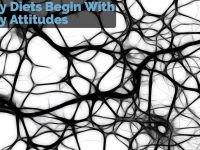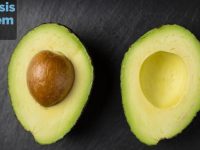If you hang around here at Climbing Nutrition, you know I don’t often write about weight loss. A big reason why is that I don’t think weight loss should be a priority for most climbers (who are interested in improving performance), and I don’t want those climbers who visit this site in pursuit of performance to walk away thinking I fully endorse losing weight as a strategy. Most of us already know a few people who are going to offer that advice unsolicited, anyway—the ones who will tell you losing 5 pounds (2.5 kilograms) was all it took to break them into a new grade.
At some point, though, my reticence becomes selfish. Two years ago, I wrote a quick double article covering my top ten “primers” for losing weight—little pieces of advice regarding the process rather than the specifics. This sated my guilt, but I think it’s time to add to the Primers and give weight loss an honest, in-depth look. After all, there are perfectly legitimate reasons to want to lose weight, and in any case I’d rather you have the best information available rather than rely on sources that may be less scrupulous.
I have a three articles planned out for this series, though there’s a fourth article trying to breach my consciousness, so it may end up a bit longer. My goal in these articles is to tackle some of the “big picture” aspects of weight loss like “how much of a role does exercise play” and “what’s a good diet for weight loss”. If I achieve my goal, by the end of the series you’ll have an understanding of how you can lose weight successfully and in a healthy manner.
This week, our discussion begins with the role of physical activity in losing weight.
The Mechanics of Weight Loss
I want to discuss the basic mechanics of weight loss quickly before we talk about exercise proper.
Regardless of what some diet gurus claim, weight loss (or gain) is a function of calories. Just as you cannot gain weight without exceeding your daily caloric needs, you cannot lose weight unless you limit the amount of calories you provide to below your need. This is because the calories we consume (and burn) are not, in fact, directly in the form of energy, but rather in the form of physical matter—molecules of carbohydrates, proteins, fats, and sometimes alcohols. Like any physical matter, these molecules have mass, and when we cannot use the energy inherent in those molecules we store them and add their mass to our own. The opposite is true as well.
That might seem a little convoluted, so let me phrase it a different way:
We don’t store “energy”; we store molecules that have inherent energy. If you want to lose weight, you have to lose molecules, and the best way to do that is to force the body to tap into the energy they contain so we can exhale the by-products (carbon dioxide and water). The average sedentary adult exhales around 2 pounds of carbon dioxide per day (0.9 kilograms)—when we exercise, we exhale even more. Thus, calories matter because calories are contained in massive molecules; you can’t separate the mass from the energy.
Since calories matter, the focus of any successful weight loss program (even if an indirect focus) is restricting external calories—the intake of new molecules—to fewer than the body needs to meet its basal requirements. There are two ways we can do this:
- Eat fewer calories—add fewer molecules—per day than we need (Diet)
- Expend more calories—exhale more molecules—per day than usual (Physical Activity)
With diet as the focus, a person trims down how much food they eat or the caloric density of that food and thus reduces the energy they supply to their body. Assuming they cut enough calories from their diet to incur a deficit—that is, assuming the external calories they consume can’t cover 100% of the metabolic processes their body relies on to survive—then they will lose weight because the body will turn to the molecules stored in the body.
With physical activity as the focus, a person increases how active they are, and since physical activity requires energy they thereby increase the amount of calories their body needs in a given day. Once again, assuming they don’t “save energy” elsewhere, they will lose weight because that extra energy will come from stored molecules.
There’s no dichotomy between diet and activity; they exist on a spectrum. You can cut calories and also increase activity, and you will get results commensurate with the effort you put in. It should go without saying that both a healthy diet and physical activity are good for you—the question we’re more interested in here is “how much of a role can physical activity play in weight loss?”
Can You Outrun Your Diet?
You’ve probably heard the phrase “you can’t outrun a bad diet”. In today’s meme-filled world, it’s usually accompanied by an graphic showing how that same 500 calories you just ran your ass off for an hour to burn is equivalent to eating a serving of French fries, which can be done in about five minutes. I guess this is what people who run on treadmills to lose weight eat afterwards—French fries?
Regardless of the hyperbolic extension, there’s truth in the concept: it’s much easier to consume calories than to burn them, and if you don’t monitor your caloric intake it’s easy to unconsciously reconsume those calories you burned in later meals. If your diet is filled with junk, you better be exercising as hard as Usain Bolt if you want to lose weight.
Perhaps more to the point, exercise-only weight loss programs appear to be less effective than diet-only programs, which implies that exercise is less useful than diet. In fact, the takeaway message from most review articles is that exercise is not an effective means of weight loss—though it does provide other benefits—so you’re better off sticking to dietary changes and adding in exercise only as a supplement.
It’d be easy to write off exercise for weight loss based on this conclusion, but I think we do better and look a little deeper. The reality is that exercise is a positive force for weight loss—how could it not be when it requires energy as an input?—but it’s complicated.
First, there’s a decent amount of evidence suggesting that the reason exercise appears to be ineffective is because the trials that made that observation didn’t use an appropriate amount of exercise. For example, the meta-analysis linked to above noted that while most authorities consider 225 minutes of moderate or higher intensity exercise to be an appropriate goal for weight loss, only two out of the fourteen trials included actually met that goal—the rest used either inadequate amounts of exercise, inadequate intensities, or both.
Similarly, a Cochrane Review on the subject found that weight loss trials that used high-intensity exercise had universally better results than trials that used lower-intensity exercise. Exercise was beneficial for weight loss in general, it concluded, but the harder you exercise, the more weight you’ll lose.
A second problem—and a problem inherent in the design of these trials—is that trials measuring only the effect of exercise on weight loss do not usually measure caloric intake as well. This makes sense from the perspective of isolating variables, but the main thing it tells us is that most people will compensate for the extra calories burned to some extent (they’ll eat more). That’s important information, but most people trying to lose weight track calories, and tracking calories will mitigate caloric overcompensation. Thus, in a real-world scenario, exercise will probably be more effective.
Finally, we need to consider more than the short-term role of exercise in weight loss; we need to also examine long-term success. Here, it’s clear that exercise is beneficial: individuals who lose weight and also exercise are significantly more likely to continue losing weight post-intervention. On the other hand, individuals who do not exercise are significantly more likely to regain weight. And again, the more the individual exercised (and the harder), the more weight they tended to lose, even post-intervention.
Put together, this suggests a few things about successfully losing weight with exercise:
- You should aim for four hours of exercise a week (or more). While less is still beneficial, more is better.
- You shouldn’t count low-intensity exercise towards your total. Walking is a perfectly fine activity and certainly has its own benefits, but if you’re hoping to lose weight, you’re better off doing something that makes you breathe hard or sweat.
- You should monitor your daily caloric intake, even if you don’t plan on restricting it. Caloric overcompensation after exercise is normal, but monitoring your daily intake will help you keep it at a level where weight loss is consistent.
In other words, exercise can play a significant role in weight loss (and definitely wards against weight regain), but you can’t half-ass it and get good results. For some people, this may make exercise not a feasible option for weight loss, and that’s okay—dietary change is still our most potent tool! But for the active individual, exercise can also work.
Aerobic Training vs. Other Exercises for Weight Loss
One thing you might note from the reviews and meta-analyses above is that they only used data from aerobic exercise, usually walking, jogging, and running. The nice thing about these activities is that they’re virtually the same person-to-person, do not require special equipment or training, and can be done anywhere; they’re easy to use and control for in a study setting. Other types of activity can be harder to measure, and we don’t have the same volume of data in regard to their power to drive weight loss. We do have some data, though, so that’s what we’ll look at.
Outside of aerobic exercise, the next most studied type of exercise is resistance training. According to the position stand of the American College of Sports Medicine, resistance training is not an effective means of losing weight, though it may “may increase fat-free mass and increase loss of fat mass and is associated with reductions in health risk”, which highlights an interesting semantical problem in the scientific literature: “weight loss” is defined separately from “fat loss”.
This problem arises because resistance exercise is well-documented to increase muscle mass—that’s the primary reason most people lift weights in the first place. Over the course of a trial, it’s not uncommon for the resistance training arm to gain muscle and lose fat in near equal measure, especially when the trial uses untrained individuals. If you’re measuring the effect of resistance training on weight loss, then, it appears superficially to have done nothing because no actual weight was lost. On the other hand, it’s not uncommon for multiple pounds of fat to have been lost, so from a “getting slimmer” perspective resistance training is successful. You have to read beyond the abstract to see this, though!
Again, there are far fewer trials examining the effect of resistance training on weight (or fat) loss than there are aerobic trials, but here are a couple that demonstrate the above point perfectly. In both, the resistance training arm lost over 3 pounds of fat over the course of the trial, outperforming aerobic exercise in one and coming close to aerobic exercise in the other. There’s another interesting thing to note in these trials, as well: the combination arm, which did both resistance training and aerobic exercise, outperformed both groups. Clearly, it pays to diversify your physical activity for weight loss.
How about climbing—is it effective for losing weight? Unsurprisingly, we have zero trials examining the effect of climbing on weight loss, unless you consider this one oddball study that followed two climbers around for five weeks. In that study, it was found that limiting your food budget to $1 a day and climbing hard for 5 weeks straight leads a significant loss of weight—about 6 pounds (3 kilograms) for the first climber and 11 pounds (5 kilograms) for the other. I’m not sure there’s a real lesson there, except that hard dietary restriction combined with five weeks of hard exercise will result in a significant loss of fat!
Aside from that trial, I think we can still confidently say that climbing can and does drive weight loss—we don’t need studies on every individual type of physical activity to be able to conclude that physical activity, in general, encourages weight loss. The more important factor is how much you climb and how hard you climb—the latter meaning not physical grade, but rather subjective challenge. If you climb several days a week, push your muscles, and get sore and sweaty, you can be confident it’ll contribute to weight loss.
It’s About the Activity, Not the Calories
The above can be considered the “science portion” of this article; now, I want to take a turn and address a more philosophical question in regard to physical activity and weight loss: Given that exercise can be effective for weight loss, why isn’t it common (or easy)? Or, why do we simultaneously believe that exercise isn’t a great way to lose weight, but also turn to the treadmill every January when we decide we want to lose weight? In my opinion, it’s because we’re culturally trained to look at exercise incorrectly. To many people, it’s not an activity that is engaging and rewarding in-and-of-itself, it’s a chore that must be done for one’s health much like eating one’s vegetables.
It’s January right now, so if you go to a gym it’s easy to see this mentality in action. Gyms are packed January, and nowhere are they more packed than the aerobic machine area where throngs of newly reformed health aficionados put in their hours on the treadmill or stairstepper. They know that exercise is good, but they’ve found the most boring way to do it (apologies if you love running on a treadmill). Aerobic machines are convenient, they allow you to easily measure the calories you’ve burned, but they aren’t engaging and they don’t motivate you to continue exercising long term—they convert physical activity from a pleasurable activity to one in which you count down the calories until you’re done, maybe while reading a book or watching TV.
Some people have the type of mentality that allows them to do this, day after day, year after year. More power to them, they’ve found an exercise routine that works. I don’t think most people are wired that way, though, and thinking that this is what exercise should look like primes a person for failure. Exercise isn’t about burning calories; it’s about finding a fulfilling activity, an activity you enjoy enough that you’d do it even if it didn’t burn calories. We’re climbers—I think most of us get this!
If more people resolved to find an exercise they enjoy rather than simply to exercise more, improved fitness would naturally follow. Fit people are fit not because they’re the best at pushing through the existential pain of burning endless calories in an activity they loathe, but because they enjoy an activity and spend countless hours pursuing it. The fact that their chosen activity uses calories as a currency is just an added benefit.
Generic “exercise” is a losing strategy for weight loss, but engaging physical activity isn’t. If the only reason you’re doing something is to lose weight, it’ll be hard to stay motivated for the long haul. On the other hand, if you find an athletic activity you enjoy, you’ll probably put the hours in “for free”, not just this week but in the months and years that follow. Pair this with healthy diet habits, and weight loss will come naturally.
Pairing Exercise with Diet
The last thing to cover in this article is combining physical activity with dietary change—specifically, avoiding the pitfall of excessive dietary restriction combined with exercise. Many motivated people train hard and diet harder only to find it impossible to do either a few weeks later. As much weight as they might lose in those weeks, it all comes back once their motivation inevitably flags.
If you’re exercising—and especially if you’re exercising the recommended 4+ hours at moderate or greater intensity—you need to be careful about how much you restrict your diet. Most experts (myself included) recommend against losing more than 1-2 pounds (0.5-1 kilogram) per week, not necessarily because it’s unhealthy to do more (though it can be) but because it’s much more likely to lead to dietary burnout and subsequent regression. This amounts to a maximum daily caloric deficit of 500-1,000 calories, which means if you run for an hour and burn 600 calories you shouldn’t also pull more than 400 calories from your diet that day. In fact, you’d probably be better off not pulling any calories (though still tracking to ward against overcompensation).
If you’re exercising a lot, you might even need to add calories in to make sure you’re fueling that exercise sufficiently. Recovering from exercise takes energy, and if you don’t provide enough energy the body won’t just endlessly supply you with it from the body fat, it’ll start slowing that recovery down and signalling to your body and brain to take it easy. This is where that loss of motivation starts—hormonal signals that you’re overdoing it.
Thus, exercise is a great addition addition to dietary change not necessarily because it allows you to lose weight faster, but because it makes it easier to eat a “normal” amount and stay successful. If you try to burn the candle at both ends, you’ll burn out fast.
Pulling It All Together
When I first envisioned this article, I knew I wanted to investigate the idea that you couldn’t outrun a bad diet. I understood the point this phrase was trying to make, but I also knew it was misleading and depended largely upon the surrounding context. Exploring that context became the backbone of the article.
As it turns out, exercise isn’t as useless as it’s made out to be. Diet may remain our best option for losing weight, but exercise can and often does play a major role as well. There are caveats, though.
First, we need more exercise than the 60 minutes a week that major news outlets repeatedly tell us is all we need. An hour of exercise a week is better than no exercise a week, but if you want to lose weight with exercise you’re going to benefit more from the 3.5-4 hour range (or beyond).
Second, we need to exercise harder. With the rise of fitness trackers, the 10,000 steps-a-day goal has also risen to prominence, but if those steps come mostly from low-grade aerobic activity like walking then you’re only getting a portion of the benefits of exercise. For maximum benefit, you need to get your heart pumping; you need to sweat.
When confronted with these caveats, many people might shrug away and say it’s not worth it. If exercising only meant running on a treadmill, I might agree with them—but there’s a whole world of physical activities out there. If you find one you love, four hours a week won’t seem so impossible. If you enjoy the activity for itself, you won’t notice the exertion you put in half as much.
The bottom line is that you can approach exercise in one of two ways: as a chore or as an activity. If you have to force yourself to do something—whether it’s follow a certain diet or exercise—success rarely follows. If you do something because it has intrinsic value to you, you’re far more likely to succeed. So find an activity you love and do it; fitness will follow.















Suggestion for an article: intermittent fasting and climbing – specifically the 5:2 and the 16:8 varieties. I’ve found the 5:2 variety quite effective for weight loss but 16:8 not so much. But are they compatible with climbing performance?
I think that certain forms of exercise, like running, can play a crucial role, at least for some people. I have a friend who was a full time climber and climbed to a decent levell (she climbed at least one 5.14). She said the only way she found she could get really lean was through running. UK climber Dave Macleod has said similar on his web site. He’s another very accomplished climber (having climbed V15 and 14d). When he damaged his ankle from a fall he had to give up running. He said despite his best efforts he couldn’t help but put on weight. Eventually he switched to a ketogenic diet which got him back down the weight he felt he climbed best at.
It seems to me that exercises like running are going to work your cardio vascular system far harder than climbing can. Often the limit with climbing is finger strength. If our fingers fail first then it doesn’t allow us to really stress our bigger muscle groups and hence get our heart and lungs really working hard.
One of the complications with simple calorie restriction is that losing weight is just one way the body can compensate. Living in a cold climate (UK) I’ve noticed when I don’t eat enough I often feel cold. Eating something makes feel warmer again. So it seems the lack of calories results in a slighty lower body temperature rather than fat loss. Longer term it can have more subtle but still significant effects like lack of motivation to do tasks that require more energy.
Great article. While I’ve never had to lose weight (blessed with a fast metabolism), I find most people try and fixate one aspect of health when trying to get healthier, and see it as a short term goal, where it really is a dedication to changing your lifestyle permanently. In addition, it’s generally easier to form new habits than to break bad ones. The other problem I see with only a diet based approach, is you have to change your habits twice, in that you need to eat a specific diet that is different from your normal one to lose weight, and then switch it up again to maintain your goal weight in a healthy manner. With adding exercise into a moderately healthy diet, you boost your caloric needs past what you’re eating at the moment by changing one habit, and once you stabilize at a healthy weight you generally can maintain that moderately healthy diet at your caloric needs at that healthy weight.
On a side note, I’d like to thank you Brian for all the information I’ve gotten from this site. It and other sports nutrition sources, in addition to starting to climb, life and run, have helped me facilitate lifestyle change to where now physical activity is a necessity rather than a chore, and a (hopefully) life long passion. and priority
thanks for the 1st article of the new year! hope you recover well
there are some research about total energy expenditure might be constrained
what is your view on that?
for got to add link…
https://www.ncbi.nlm.nih.gov/pubmed/25906426
Thank you for this really comprehensive article and bravo for the philosophical part of it ! This aspect seems central regarding weight/fat loss to me as well but is so rarely covered.
Your blog is truly a gold mine for the climbers we are, keep up the good work !
Greetings from Belgium
Hi Brian thanks for that really interesting. As someone who has been down the excessive exercise calorie restriction route to weight loss I can safely say it doesn’t work long term. In fact I ended up fatter, weighed a lot less but significantly fatter. Climbed harder for about 4-5 weeks then got steadily weaker.
I’d like to address the above comment about not working our bigger muscle groups. I feel climbing does actually work a whole host of large muscle groups at a variety of intensities. It may not be truly aerobic but pull through a tough crux section on a route or do an 8-10 move boulder problem at your limit and you will be breathing very hard, and since ‘calories’ are expelled in the form of CO2 you will burning energy and working your CV system.
I guess the biggest difficulty is getting the balance right; reduce weight, ideally through fat loss but not at the cost of muscle (or minimise loss of muscle). And how much additional exercise should a climb do? Some training ‘gurus’ recommend no running or CV exercise. Is this wise? I feel having a strong CV system both in terms of endurance and strength is a worthwhile pursuit. But as you say you’ve got to enjoy it.
Just ut of interest have you read this ;https://jissn.biomedcentral.com/articles/10.1186/s12970-017-0177-8 Thought it was an excellent piece on protein consumption. Nice overview on when and quantity of protein but also quality. Covered age ranges swell.
thanks for the 1st post of the year! hope you recover well!
there is some research showing that the total energy expenditure might be contrained
e.g. https://www.ncbi.nlm.nih.gov/pubmed/25906426
do you have any comment on that?
I definitely plan on addressing IF in some future article, either in this series itself or afterwards! Thanks for the suggestion.
I’m glad to hear you’ve found some success with lifestyle changes! I agree that it’s all about habits in the end, and especially trying to form new, healthy habits vs. just trying to get rid of unhealthy ones. In fact, that’ll actually be a focus of my next article in this series, at least indirectly!
Aerobic exercise is definitely slightly more effective than other (studied) forms, at least in isolation, and of course has benefits that climbing (or weight training, etc.) don’t offer cardiovascular health-wise; if a person wants to run and enjoys it, then they should go for it! In the section comparing aerobic exercise to other forms, I mostly wanted to make the point that any exercise done for sufficient time and at a sufficient intensity is likely to contribute towards weight loss. Very fingery climbing could be less effective since (as you said) the fingers may tire before you can really work anything large, but if weight loss is the goal you could also attempt to find climbs that are more balanced and allow you to use more parts of the upper (and lower) body and train on those at least some of the time.
In regards to caloric restriction, the body does have a number of defenses that can often make weight loss annoying—less heat generation, less fidgeting (NEAT, non-exercise activity thermogenesis), loss of motivation, etc. In part, this is why it helps to bring in exercise as well as dietary change and to limit the total caloric restriction so as to not lose weight at too rapid a pace. Ideally, all the changes become integrated with your lifestyle, leading to (if not weight loss) then a healthier self. More on that in a future article, though!
I think the author (Dr. Pontzer) makes some compelling points, and I think he’s right about our commonly used additive model being inaccurate; I think he also overestimates the constraints on total energy expenditure as well, though. To his credit, he does acknowledge there are limits that present “challenges” to his hypothesis—such as the extreme energy expenditures of endurance athletes that in no way could be compensated for by reductions in total energy expenditure—but the potential explanations he offers (such as these individuals having naturally higher total energy expenditures due either to genetics or training from a young age) are lacking, especially since the energy expenditures of the athletes he’s talking about are often some 6,000–10,000 calories per day, or about 4,500–8,000 calories above a typical basal metabolic rate. Nobody, including elite endurance athletes, has a resting energy expenditure high enough to demand even 4,000 calories on a rest day, so it seems unlikely that a higher-than-normal total energy expenditure can explain more than 10-20% of the increased dietary need during exercise.
What’s more likely, I think, is that we have metabolisms somewhere between simply additive and completely constrained. Our body wants to be in homeostasis—body weight included—and will resist change within a certain window, both in terms of weight loss and weight gain. This is backed to an extent by observations that weight gain happens not slowly throughout the year, but in a “burst” during the holiday season when overfeeding is common; our body handles minor daily fluctuations in caloric intake well, but large fluctuations are too much for it to overcome. This is perhaps why more and higher-intensity exercise is better for weight loss long-term (despite what Dr. Pontzer asserted in the article), because our body is less capable of accounting for the extra energy expenditure. We won’t lose as much weight as might be suggested by raw calorie counts, of course, but the more calories burned, the more likely we are to lose weight (assuming we don’t replace them).
Thanks!
I think the question of whether to run or not depends in large part upon a person’s goals. The main “risk” with aerobic exercise is that you’ll put on extra weight in areas you don’t really use for climbing, either from muscle gain, extra glycogen storage, or both. For the majority of climbers, I don’t think this is enough of an issue to worry about; gaining a few pounds in the legs is unlikely to have a significant effect on your climbing, while improving your overall fitness may. Plus, most climbs outdoors (at least where I live) require hiking to get to, sometimes multiple hours—if you don’t have good cardiovascular fitness, you’re pooped before you even get on the rock!—so training your cardiovascular fitness enough to do miles of hiking while carrying gear without getting fatigued is important.
That’s a really long article for not putting any details into specific climbing training/exercises regarding weight loss issue. A little bit disappointing to say the least.
I’m sorry you’re disappointed by the theme of the article; the intention was to go over the general role of exercise in weight loss, not prescribe specific activities. Aside from that general role, there’s not really a “better” or “worse” exercise as far as climbing goes except insofar as caloric cost is concerned—but if that’s your primary consideration, then you’re probably shorting yourself on other benefits training-wise, at least for climbing training.